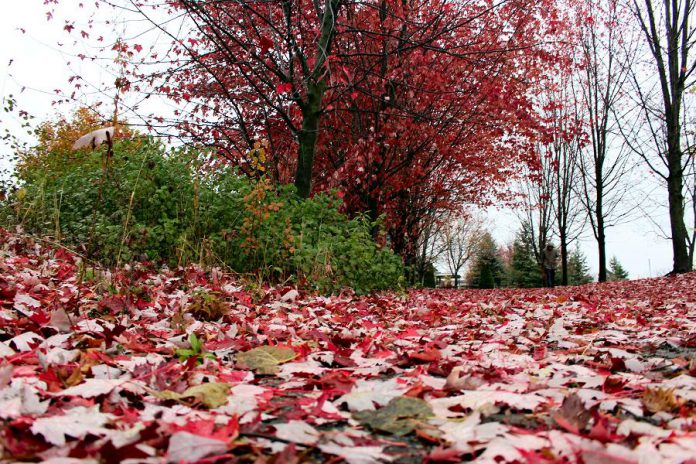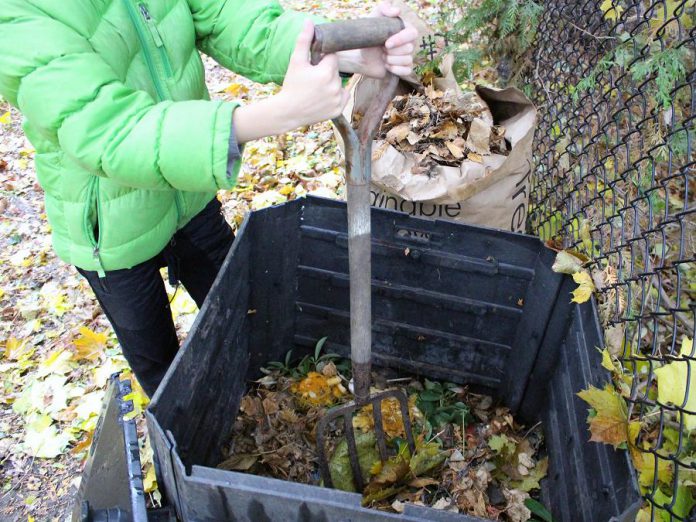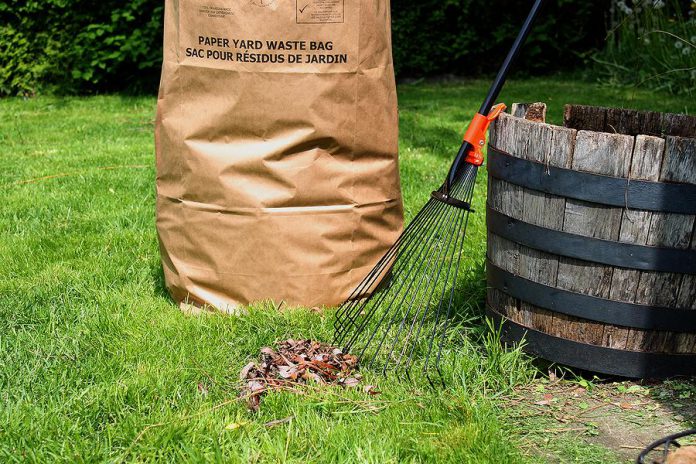
Autumn is the season with the shorter days, colder nights, and beautiful colours, and is also the season for raking leaves.
But before you rake them up, consider that they can be put to good use on your property.
You can leave them on the ground until the spring, use them as mulch or compost, or create a new food or perennial garden on your property.
Leave the leaves

Leaving your leaves on the ground not only creates a layer of protection for your plants, but it also provides a comfortable environment for overwintering insects and hibernating animals.
“I never remove leaves from my gardens until April, since many species of bumblebees, butterflies, and moths overwinter in or just below the leaf litter,” says local naturalist Drew Monkman.
“This can be as an egg, caterpillar, chrysalis, or adult. The familiar woolly bear caterpillar, for example, curls up for the winter under leaves, taking advantage of the leaves’ insulating value and layer of protection from predators. Also, mated queen bumble bees, seek out leaf cover. They then burrow a few centimetres into the ground under the cosy blanket of insulation.”
Leaving at least some of the leaves in certain areas of your yard makes for a low-maintenance, eco-friendly fall season in the garden. This provides insulation for plants and animals until the spring.
Mulch the leaves

The easiest way to mulch your leaves is to let them gather and dry out on your property, then mow over them with a lawnmower.
This breaks up the leaves into smaller pieces, which allows them to break down faster. You can then rake up the shredded leaves and spread them to a depth of two to three nches over your garden, or around trees and shrubs to a depth of three to four inches.
You can also mix shredded leaves into the soil of your food garden beds, which will add nutrients to the soil for growing vegetables in the spring.
Compost the leaves

If you have a backyard composter, dried leaves can be used for composting.
Leaves are rich in carbon so mixing them into your composter with your nitrogen-rich kitchen waste will help keep the nutrients balanced, preventing unappealing odour and pests.
Shredding the leaves with a lawnmower will make them decompose faster, but isn’t necessary.
Rake up and bag the leaves (shredded or not) into paper yard waste bags. Keep these bags in a shed or near your composter, and add an equivalent volume of leaves for every load of kitchen waste that you add to your composter.
Use the leaves as food for a “no-dig” garden

You may have heard about a revolutionary gardening philosophy called ‘no-dig gardening’. Just as it sounds, this technique is based on maintaining the soil ecosystem by adding layers of leaves, cardboard, lawn clippings, and newspaper — rather than digging into pre-existing lawn — to create a garden.
No-dig gardening maintains soil health and it is easier than conventional methods because it relies on the soil microbes and worms to do the “digging” for you. This trend is catching on in the gardening world with landscapers and master gardeners in the Peterborough area, and it’s a great way to put your fall leaves to good use.
“No-till or no-dig gardening is an eco-landscaping practice that has a multitude of benefits, including ensuring that the soil retains carbon, helping to reduce soil erosion, and building up the underlying microorganisms,” says Carlotta James, co-founder of Three Sisters Natural Landscapes.
“Soil is a web of interconnected biological processes. If you follow a no-till gardening practice, you will ensure that the soil food web stays vibrant and resilient.”
How to make a no-dig garden
If you are planning to replace a section of your lawn, or to create a new garden in your yard, here is a quick step-by-step method to build a no-dig bed this fall:
- First, mow the lawn to a short height,
- Choose the area and shape of your new garden. This method does not limit you to square beds so be creative!
- Mark out the outline of the bed with string,
- Lay cardboard or five sheets of layered newspaper,
- Water the cardboard or newspaper,
- Lay an inch layer of chopped leaves, called a brown layer,
- Next, sprinkle lawn clippings on top (maximum of 1/2 inch thick). This is a green layer, which should always be half as thick as the brown layers.
- Lay a 1-1/2 to 2-inch layer of compost, also called a brown layer
- Top with a 1/2-inch thick layer of chopped leaves as mulch, to seal in the compost layer.
Put the leaves out for green waste collection

If you really can’t make use of the leaves on your property, rest assured that they will be put to good use once picked up from your curb.
“All the green yard waste that is collected at your curbside by our public works department goes to the city’s licensed facility to be composted,” says Janelle Carey, the Waste Diversion Coordinator for the City of Peterborough. “Green waste collection runs every week from April until the end of November.”
The City of Peterborough will pick up an unlimited number of brown yard waste bags with your weekly curbside pickup, but you must ensure that each bag weighs no more than 50 pounds (22 kg) and is no taller than 1 metre (3 feet).
Simply rake up the leaves, bag them, and put them out at the curb along with your garbage and recycling.
“Please use the city’s Green Waste program and do not rake leaves onto the street,” Carey cautions. “This is because leaves are problematic around storm sewers that can become blocked. This can cause flooding and icing.”
As the leaves continue to fall, remember that they create important for wildlife habitat, provide nutrients to the soil, and make a great ground cover in your gardens.
Now that you know how you can make use of your leaves, enjoy the fall gardening season before the snow flies!


























